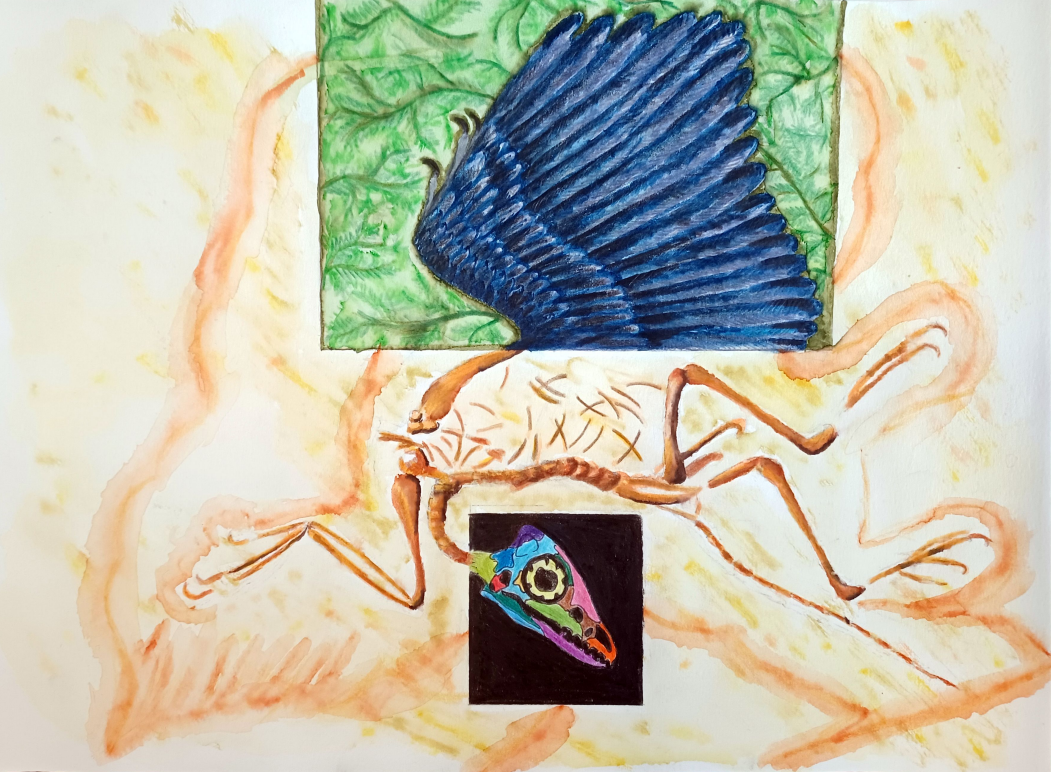Artwork by Asia Hoile
This article was originally published in The Oxford Scientist Hilary Term 2022 edition, Regeneration.
The image that springs to mind when people think of archaeologists, palaeontologists, and paleoanthropologists is normally Indiana Jones or Dr Alan Grant from Jurassic Park. The reality of life in these fields is often far less sexy.
Paleoanthropologists spend a vast amount of time sat uncomfortably, exposed to the elements, meticulously excavating field sites in the search for the next big fossil.
Sometimes, this hard work pays off. 2021 saw many exciting fossil discoveries be widely publicised and gain public attention, such as the discovery of the “Dragon Man” in China and the Homo fossils from Nesher Ramla, Israel. And the hunt for the last common ancestor between humans and chimpanzees is forever ongoing. But knowing where to stick their trowels in first has been an ongoing challenge for anyone whose research relies on finding rare objects, whether it be human remains or ancient artefacts.
Traditionally, this first-process relies on researchers utilising surveys done by their professional predecessors, or on personal knowledge of the landscape, to know where to start digging. This is time intensive, and so in recent years there has been an effort to regenerate fossil discovery techniques, including the automation of fossil hunting previously unexplored places using a range of machine learning techniques.
For example, in 2012, artificial neural networks were successfully developed and deployed in the hunt for vertebrate fossil sites in Wyoming, USA. Similarly, in 2014, an unsupervised machine learning technique called iso-clustering could predict locations of interest in Utah based on information from one or two fossil sites.
Research published in 2021 from Oxford researchers Professor Susana Carvalho and her DPhil student João d’Oliveira Coelho—and collaborator Professor Robert Anemone—has pushed forward this regeneration one step further. The team applied a relatively simply form of unsupervised machine learning—called k-means—to satellite images of Gorongosa National Park, Mozambique, becoming the first research to apply the k-means algorithm to the search for new fossil sites.
The algorithm works by creating clusters of similar pixels within an image–here, satellite imagery of previously unexplored woodland. These clusters are classified–without any previous training–into landscapes with or without sites containing fossils. The model can then be tested by comparing its results to the “ground truth”, or, translated, a human checking if there are fossils in the cluster, or clusters, the model predicted. This method can handle a vast amount of information, and so has the potential to be scaled to huge projects where step one is fossil location.
Although still in its infancy, this approach can accurately locate areas of interest and has already assisted in the discovery of four new field sites in the scientifically important location of Gorongosa National Park.
Finding new fossils in this location is of particular interest as the East African Rift System—which spans from Ethiopia to Mozambique—is known to have been of central importance in early human evolution. Sites in Tanzania and Ethiopia have produced many important fossils and artefacts have been discovered, including stone tools and Ardipithecus, Australopithecus, and Homo skeletal remains.
But the southern region of the Rift System has been neglected in paleoanthropological research because the landscape is harder for fossil discovery. Applying this automated technique enabled researchers to access fossil sites in new and hard-to-reach locations, and conduct research testing current evolutionary questions.
This algorithm—and the use of AI more generally—has huge potential for revealing fossils in locations paleoanthropologists may not have reached on previous site-knowledge alone, allowing researchers to spend less time searching, and more time digging. The regeneration of fossil hunting techniques is taking the study of our ancient past and moving it into the future.





